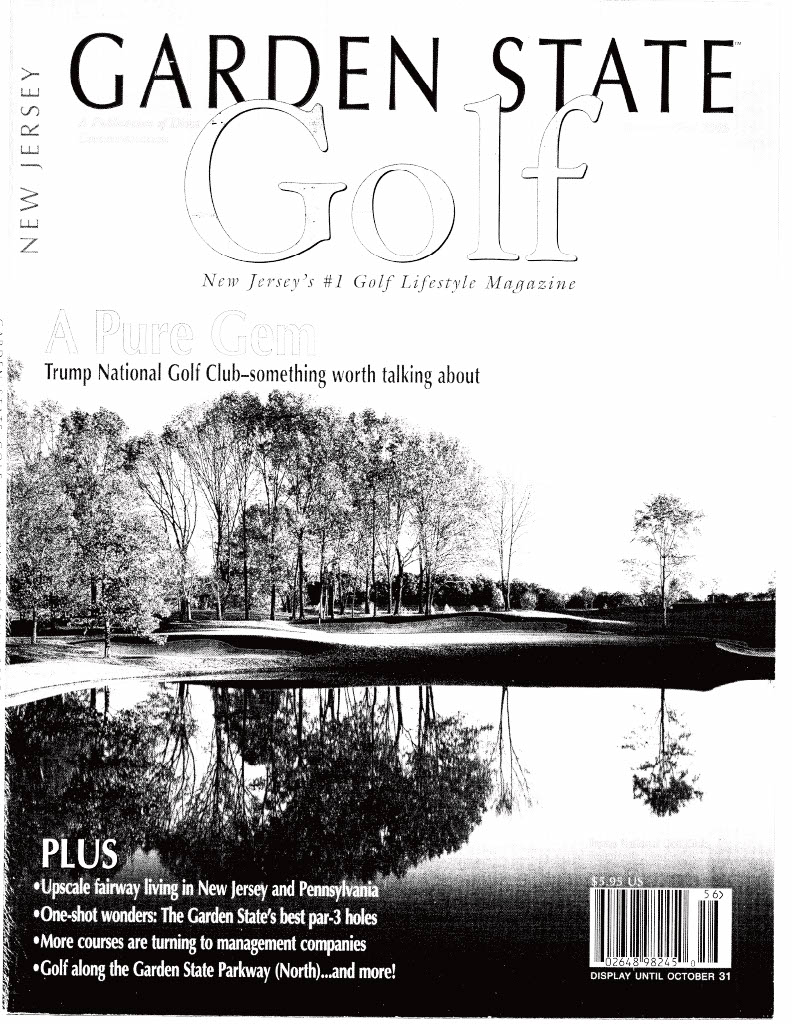Divot, Garden State Golf, Summer/Fall 2005
How can wildlife, habitat, and fragile exosystem preservation and protection be compatible with golf courses and golf-course community development? I went to southwest Florida to visit, ask questions and see first hand what Bonita Springs, Florida-based WCI Communities is doing to achieve such a balance. Initially I was skeptical after hearing that WCI Communities (800/924-2290) was developing comprehensive environmental and socially responsible residential communities, and that a large builder’s corporate strategy description included sustainability. Upon learning that it has incorporated strategic partnerships with Audubon International, the Environmental Protection Agency and the Florida Green Building Council my interest was piqued. “In recent years the emerging concept of sustainability has expanded the scope of corporate responsibility,” says Karen Childress, WCI’s Environmental Steward. “A growing number of companies are embracing the triple bottom line of economic, environmental and social responsibility which is changing the way public companies are viewed by their stake holders, and valued by their shareholders. WCI is bringing innovations to community development and green building that are revolutionizing our industry.” WCI Communities has developed or operated 696 holes of golf in Florida. It currently owns and operates 360 holes, is developing another 39 holes of golf and is planning 27 additional holes that will be added to existing communities in the near future. I got a first-hand look at a few courses from WCI’s impressive collection-Colony Golf & Bay Club, Raptor Bay Golf Club, Tuscany Reserve, Hammock Bay Golf & Country Club and Tiburon Golf Club, which include various amenities.
Can there be compatibility between golf, development and nature? “Yes it can be done, can be done well and WCI is doing it well,” says Dr. Jennifer Languell, director of Green Building Programs at Florida Gulf Coast University. Languell brings to WCI’s venture a depth of experience and knowledge as well as an environmental passion. Her PhD in Civil Engineering and Sustainable Construction from the University of Florida, and experience with green building as owner of Trifecta Construction Solutions, are valuable assets that enhance WCI’s efforts to build “healthy and efficient homes” in “resource-efficient communities.”
Al Hoffman, WCI Communities’ CEO, was a modest builder until his Tampa company, Design Communities, merged in 1985 with Westinghouse Communities, acquiring thousands of acres of coastal property, mostly in Florida. In the mid-1990s Hoffman’s company evolved into what is today-WCI Communities Inc. Their residential and golf course construction, once solely in Florida, now includes developments in New Jersey, New York, and Pennsylvania. In 2004 WCI Communities was named America’s Best Builder by the National Association of Home Builders.
“Al Hoffman was a stereotypical developer,” Dr. Languell says. “WCI Communities is now on a mission and experiencing a corporate cultural shift.” It appears that WCI’s goal is to realize a corporate culture change that supports environmental stability and development that is ecologically sound. “WCI embraces a corporate wide adherence to sound environmental principles,” Childress adds.
“Since 2000 WCI Communities has been working with Audubon International to build all of its new golf courses in conjunction with Audubon’s Golf Signature environmental standards,” says Ron Dodson, president of Audubon International. “WCI is the first US developer to make such a far-ranging commitment. WCI has been working with us on its projects, including golf and also beyond golf. As a matter of fact, at least two of the developments do not include golf courses at all, so I wouldn’t want [people] to get the feeling that it is only a golf-course focused commitment on the part of WCI. Certification in the Audubon Gold Signature program is aimed at the entire community development, including ‘green home building’ practices.”
This area of Florida offers options well suited to a particular segment of the population for destination (vacation or vacation home) and relocation. “WCI’s surveys have shown that the No. 1 thing that homeowners want is a connection to nature and natural habitats,” Dr. Languell says. Probably 50 percent of those buying in golf-course communities are doing so because of the open space it provides.”
The goal of WCI’s golf-course community development is to offer open green space, encourage wildlife habitat, preserve adjacent sensitive ecosystems, and protect water and other natural resources. Its commitment is real and, thus far, appears to be successful.

Cover photo 
Page 1 
Page 2 
Page 3
